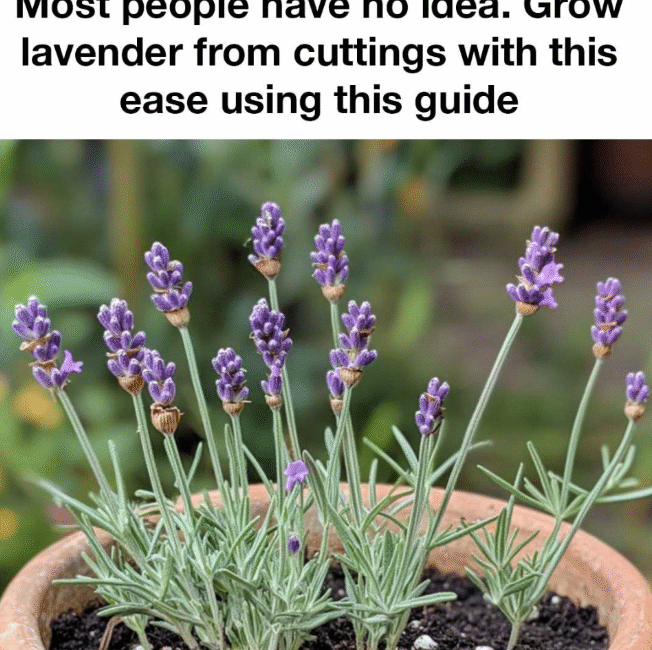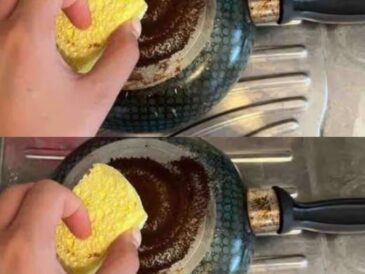Dip the cut end of the stem into the rooting hormone, tapping off any excess. This stimulates root formation.
If you don’t have rooting hormone, it’s still possible to root lavender, but your success rate might be lower.
7. Preparing the Potting Mix
Lavender demands well-drained soil, especially when rooting cuttings. A soggy mix leads to rot.
Prepare a potting medium with:
- 1 part perlite (for aeration)
- 1 part coarse sand (for drainage)
- 1 part peat moss or coconut coir (for moisture retention)
Fill your pots or trays with this mix, leaving about an inch of space at the top. Moisten the mix lightly so it’s damp but not soaking wet.
8. Planting the Lavender Cuttings
Use a pencil or your finger to make holes in the potting mix, about 1–2 inches deep.
Insert the cutting so that at least two leaf nodes are buried in the soil. Firm the soil gently around the base to hold the cutting upright.
If planting multiple cuttings in a tray, space them about 2 inches apart to ensure airflow and reduce mold risk.
9. Ensuring Optimal Growing Conditions
Light and Temperature
Place pots in a bright, warm area, but out of direct sunlight which can dry the cuttings too quickly.
Ideal temperature is around 70°F (21°C) for root development.
Humidity
Cover the cuttings with a plastic dome or clear plastic bag to retain moisture. This mimics greenhouse conditions and prevents the cuttings from drying out.
Watering
Check moisture daily. Mist cuttings or water lightly if the soil starts to dry. Avoid overwatering to prevent root rot.
10. Caring for Your Lavender Cuttings
Within 2 to 4 weeks, roots should start forming. You can gently tug the cuttings to check for resistance, indicating root growth.
Once well-rooted:
- Gradually acclimate plants to outdoor conditions.
- Transplant to larger pots or directly into the garden.
- Provide full sun exposure.
- Water moderately—allow the soil to dry between watering.
Avoid heavy feeding until the plants are established.
11. Troubleshooting Common Issues
Problem: Cuttings Fail to Root
- Soil too wet or poorly drained? Adjust mix.
- Cuttings exposed to direct sunlight? Move to shaded area.
- Cuttings too old or woody? Use younger semi-hardwood stems.
- No rooting hormone used? Try using it next time.
Problem: Mold or Rot
- Remove affected cuttings immediately.
- Improve airflow.
- Avoid overwatering.
Problem: Cuttings Wilt Quickly
- Mist regularly.
- Ensure humidity is high under plastic cover.
- Avoid hot temperatures.
12. Propagation Variations: Softwood vs. Hardwood Cuttings
While semi-hardwood cuttings are ideal for lavender, you can also try:
- Softwood cuttings: Taken from new, soft shoots in spring; root quickly but are delicate.
- Hardwood cuttings: Taken in fall or winter; slower to root but more resilient.
Experiment and see which method works best for your local climate.
13. Additional Tips for Success
- Use a spray bottle for misting—too much water can damage cuttings.
- Label your cuttings if propagating different lavender varieties.
- Sterilize pots and trays before use to reduce disease risk.
- Be patient—root development can take a few weeks.
- Use grow lights if indoor light is insufficient.
14. Benefits of Growing Your Own Lavender
- Aromatic enjoyment: Fresh flowers and foliage can be used for sachets, potpourri, and essential oils.
- Culinary uses: Add lavender to baked goods, teas, and infusions.
- Medicinal properties: Lavender is known for relaxation, sleep aid, and skin soothing.
- Environmental benefits: Supports pollinators and enhances garden biodiversity.
- Decorative appeal: Adds color and texture to any garden.
15. Conclusion: Embrace the Joy of Lavender Propagation
Growing lavender from cuttings is more than just a gardening technique; it’s an invitation to connect with nature and create beauty from small beginnings. With patience and care, you can multiply your lavender collection easily and inexpensively, enjoying the same fragrance, color, and charm as your parent plants.
This guide provides a clear, detailed path to success, whether you’re a beginner or experienced gardener. So grab your shears, prepare your materials, and start growing lavender with confidence—most people don’t realize how simple it can be!




